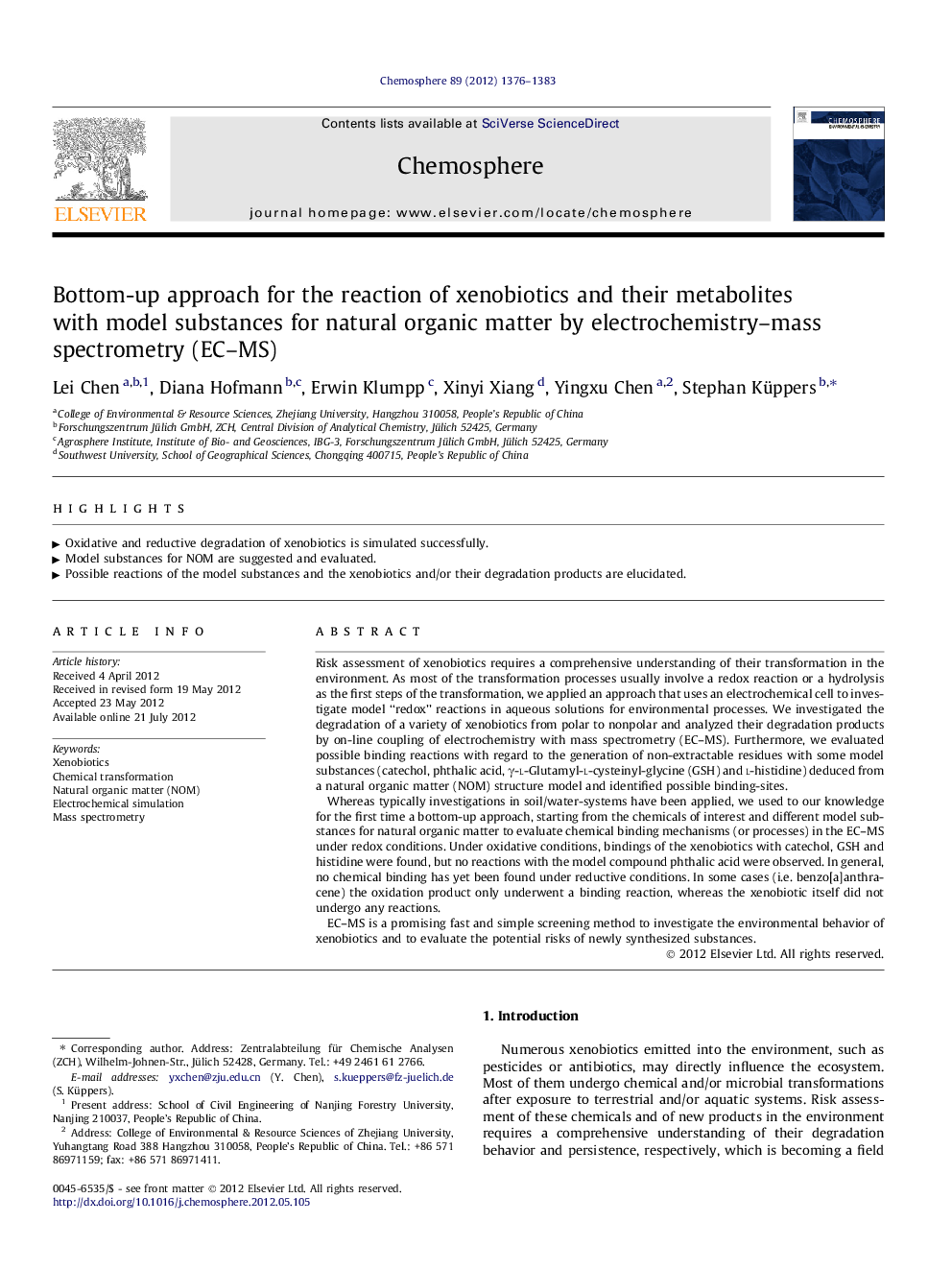| کد مقاله | کد نشریه | سال انتشار | مقاله انگلیسی | نسخه تمام متن |
|---|---|---|---|---|
| 4409654 | 1307496 | 2012 | 8 صفحه PDF | دانلود رایگان |

Risk assessment of xenobiotics requires a comprehensive understanding of their transformation in the environment. As most of the transformation processes usually involve a redox reaction or a hydrolysis as the first steps of the transformation, we applied an approach that uses an electrochemical cell to investigate model “redox” reactions in aqueous solutions for environmental processes. We investigated the degradation of a variety of xenobiotics from polar to nonpolar and analyzed their degradation products by on-line coupling of electrochemistry with mass spectrometry (EC–MS). Furthermore, we evaluated possible binding reactions with regard to the generation of non-extractable residues with some model substances (catechol, phthalic acid, γ-l-Glutamyl-l-cysteinyl-glycine (GSH) and l-histidine) deduced from a natural organic matter (NOM) structure model and identified possible binding-sites.Whereas typically investigations in soil/water-systems have been applied, we used to our knowledge for the first time a bottom-up approach, starting from the chemicals of interest and different model substances for natural organic matter to evaluate chemical binding mechanisms (or processes) in the EC–MS under redox conditions. Under oxidative conditions, bindings of the xenobiotics with catechol, GSH and histidine were found, but no reactions with the model compound phthalic acid were observed. In general, no chemical binding has yet been found under reductive conditions. In some cases (i.e. benzo[a]anthracene) the oxidation product only underwent a binding reaction, whereas the xenobiotic itself did not undergo any reactions.EC–MS is a promising fast and simple screening method to investigate the environmental behavior of xenobiotics and to evaluate the potential risks of newly synthesized substances.
► Oxidative and reductive degradation of xenobiotics is simulated successfully.
► Model substances for NOM are suggested and evaluated.
► Possible reactions of the model substances and the xenobiotics and/or their degradation products are elucidated.
Journal: Chemosphere - Volume 89, Issue 11, November 2012, Pages 1376–1383